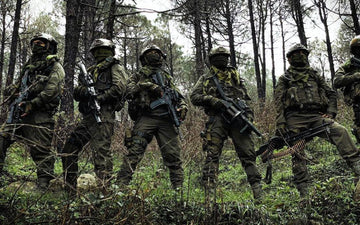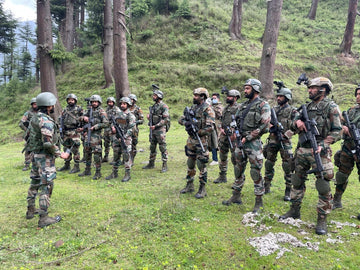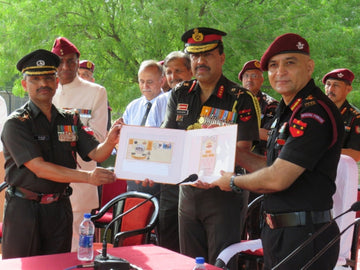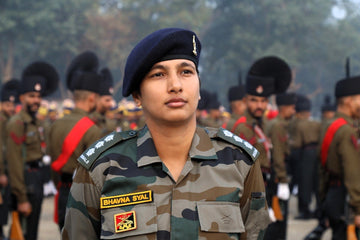The role of the Chief of the Indian Air Force (IAF) is one imbued with immense responsibility, prestige, and authority. Known formally as the Chief of the Air Staff (CAS), the incumbent holds the highest operational command within the IAF, guiding its strategic direction and ensuring the effective deployment of air power in peacetime and wartime. The compensation package for the Air Chief Marshal (ACM) is structured to reflect this significant position, encompassing a variety of components that contribute to a competitive salary. Understanding the financial remuneration of the CAS not only highlights the significance placed on military leadership in India but also opens a window into the broader paradigm of pay structures within the armed forces.
Historical Context
The Indian Air Force, established on October 8, 1932, has transformed significantly from its inception to the present day. In its early years, the IAF consisted of a small squadron of aircraft, primarily used for reconnaissance and observation. However, with the advent of World War II and subsequently the Indo-Pakistani conflicts, the evolution of the IAF into a formidable force capable of multi-role operations became imperative. The role of the CAS has similarly evolved, reflecting the growing complexity of air operations and strategic aeronautical advancements.
Throughout its history, the remuneration for top military officials has often paralleled civil service norms, designed to instill motivation while recognizing the risks and responsibilities associated with military command. The pay scale for the IAF Chief has been adjusted over the years to meet the evolving needs of military personnel, considering factors such as inflation, increased operational demands, and the necessity to attract exceptional leaders.
Salary Structure of the Indian Air Force Chief
Basic Pay
The primary component of the Air Chief Marshal's salary is the Basic Pay, which stands at ₹2,25,000 per month. This amount forms the foundation of the pay structure, reflecting the gravity of leadership expected from someone of such caliber.
Military Service Pay (MSP)
In recognition of the unique challenges faced by military personnel, the Military Service Pay (MSP) is an added incentive provided to the Air Chief Marshal, amounting to ₹15,500 monthly. This pay serves as a special compensation for the sacrifices and commitment that come with military service.
Allowances
Beyond basic pay and MSP, the role of the CAS comes with several other allowances:
- House Rent Allowance (HRA): This varies significantly based on the city of posting. Officers stationed in metropolitan areas, like New Delhi or Mumbai, may receive a higher HRA due to the cost of living.
- Dearness Allowance (DA): Also contingent on current economic conditions, the DA is adjusted regularly to offset inflation and maintain the purchasing power of service personnel.
- Other Allowances: Additional allowances may include specific entitlements like Flying Allowance and operational bonuses, designed to reflect the unique duties performed by air force staff. While these can vary widely, they contribute significantly to the total remuneration package.
Total Compensation
When taking all components of the pay structure into account, the total compensation for the Air Chief Marshal can range approximately from ₹2,50,000 to ₹3,00,000 per month. This comprehensive package not only compensates for the Air Chief's responsibilities but also recognizes the skill and expertise required to lead the IAF effectively.
Comparative Analysis
The salary of the Chief of the Air Staff is not unique in the realm of India's military pay. In fact, it aligns closely with the compensation structures observed within other branches of the armed forces, such as:
- Chief of Army Staff (COAS)
- Chief of Naval Staff (CNS)
This parity ensures that the critical positions of leadership across all branches are similarly valued and compensated, reflecting the integral role that each service plays in national defence.
Responsibilities and Precedence
The Chief of the Air Staff is laden with significant responsibilities:
- Operational Command: The CAS oversees all operational deployments and readiness of the air force, ensuring that the IAF maintains an edge in modern warfare.
- Advisory Role: An integral part of the CAS's duties includes advising the government on IAF matters, encompassing strategy, resource allocation, and personnel management.
- Membership in Key Committees: The AIR Chief plays a crucial role in key decision-making bodies, such as the Chiefs of Staff Committee (COSC) and the National Security Council (NSC). Therefore, the role not only entails military oversight but also influences national defence policy.
- Representation: The CAS represents the IAF at various national and international platforms, underscoring the global standing of India's air power.
- Precedence: In terms of ranking, the CAS holds the 12th position in the Indian order of precedence, highlighting the significance of this role in the broader context of governance and leadership.
Real-World Applications
Throughout its history, the Indian Air Force has seen notable Air Chief Marshals whose leadership has had far-reaching impacts. For instance, Air Chief Marshal ACM Arup Raha, who served from 2013 to 2016, was pivotal during significant events like the successful operations for relief during the Nakul Cyclone and for advancing indigenization in India’s military aviation sector. His strategic insights and advocacy for modernization initiatives left a lasting legacy and illustrate the remarkable responsibilities shouldered by the CAS.
Additionally, during times of crisis, such as the Balakot airstrike in 2019, the Chief of the Air Staff played a crucial role in strategic planning and execution, illustrating the tangible connection between leadership and operational success.
Statistical Data and Research Insights
According to data, approximately 1.4 million personnel serve in the Indian Armed Forces. Within this extensive network, top positions like that of the CAS play a critical role in maintaining a balanced structure of accountability and operational readiness. The pay scale demonstrates a commitment to not only sustaining military readiness but also ensuring that high-caliber leaders are consistently brought to the forefront.
Moreover, military pay scales across global contexts provide useful insights into how compensation affects recruitment and retention. Countries with competitive military salaries, such as the United States and the United Kingdom, have seen success in attracting skilled individuals to serve in their armed forces. India, too, recognizes this necessity through the competitive salary framework for its leadership roles.
Challenges and Solutions
Despite the structured remuneration, challenges persist in maintaining and enhancing the morale and satisfaction of IAF personnel. Some considerations include:
- Public Perception: Ensuring that the salary structure and benefits are viewed favorably in the public eye is critical, as societal respect for military roles boosts volunteerism. A clear communication strategy highlighting the responsibilities and achievements of the armed forces is necessary.
- Evolving Job Descriptions: As warfare becomes increasingly complex with advancements in technology, the framework for military salary structures should evolve to include compensation for cybersecurity and drone operation specialists.
- Retention of Talent: Offering supplementary education and training programs can help retain talented officers who might consider transitioning to private sector careers for better pay and benefits.
Future Trends and Predictions
As technology in warfare evolves, the compensation model for military leaders, including the IAF Chief, is expected to undergo significant transformations. The rise of cyber warfare, unmanned aerial vehicles, and artificial intelligence will create a demand for leaders who can navigate these new challenges. As such, future pay structures may need to reflect the sophisticated skill sets required for effective leadership in these areas.
Moreover, as the Indian government continues to invest in the modernization of its armed forces, there may be upward adjustments in pay to attract and retain the best minds at the helm of the IAF.
Conclusion
The salary of the Chief of the Indian Air Force is not merely a figure reflecting entitlement; it embodies the importance of rigorous leadership in safeguarding the nation’s airspace and ensuring operational readiness. While the basic pay serves as a foundation, the total compensation package, inclusive of allowances and incentives, highlights the recognition of the expertise and responsibilities shouldered by the Air Chief Marshal.
The significance of this role within the framework of national defence cannot be understated. As India continues to deal with dynamic geopolitical landscapes, the leadership of its air force remains critical. Understanding the salary and structure of this prestigious position contributes not only to a greater appreciation of military leadership but also provides insights into the broader landscape of service in the IAF. As the future unfolds, the ongoing evolution of military compensation will be pivotal in attracting and retaining leaders dedicated to the defence of India.
For anyone aspiring to learn more about the intricacies of defence leadership and the specifics of preparation for a career in this field, resources such as SSBCrack and SSBCrackExams offer valuable insights, guidance, and knowledge to aid in this journey.





